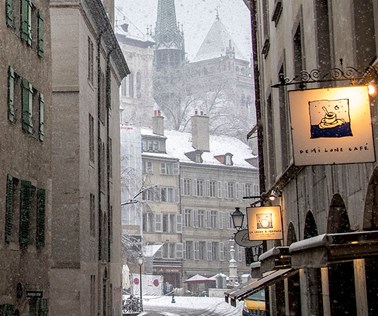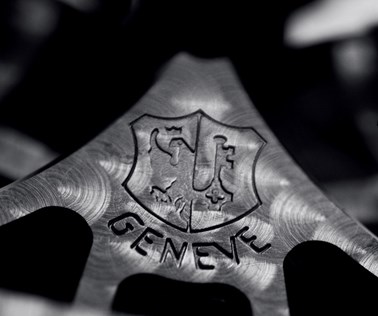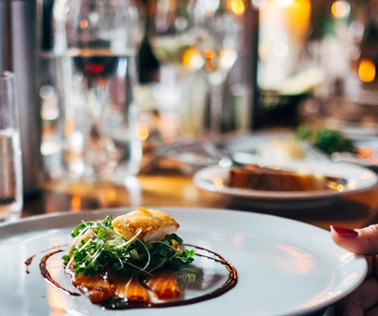Get inspired
Get inspired by the city and discover Geneva's stories, secrets and interesting anecdotes.
The Jet d'eau originated with watchmaking
Like most great inventions, the Jet d’Eau was actually created by accident. In 1886, the hydraulic factory, delivering water from the Rhône to the city's craftsmen and watchmakers, having to install a safety valve designed to relieve excess pressure by letting water escape, created a 30m jet towards the sky : the Jet d'Eau was born.
In 1891, Geneva City Council decided to turn the water jet into a tourist attraction and moved it to the end of the jetty in the port of Eaux-Vives. Connected to the drinking water network, the second water jet was born - climbing to 90m.
In 1951, new waterworks built to use the lake allowed the jet to reach 140m.
Did you know the Jet d'Eau had a beauty secret : The secret to propelling such a huge torrent of water into the sky is in the pipes. A special tailpipe projects a tube of water measuring 16m in diameter and another pipe fills it with millions of air bubbles to create its magnificent white colour.
On 25 August, 2016, the fountain celebrated its 125th anniversary at its present location.
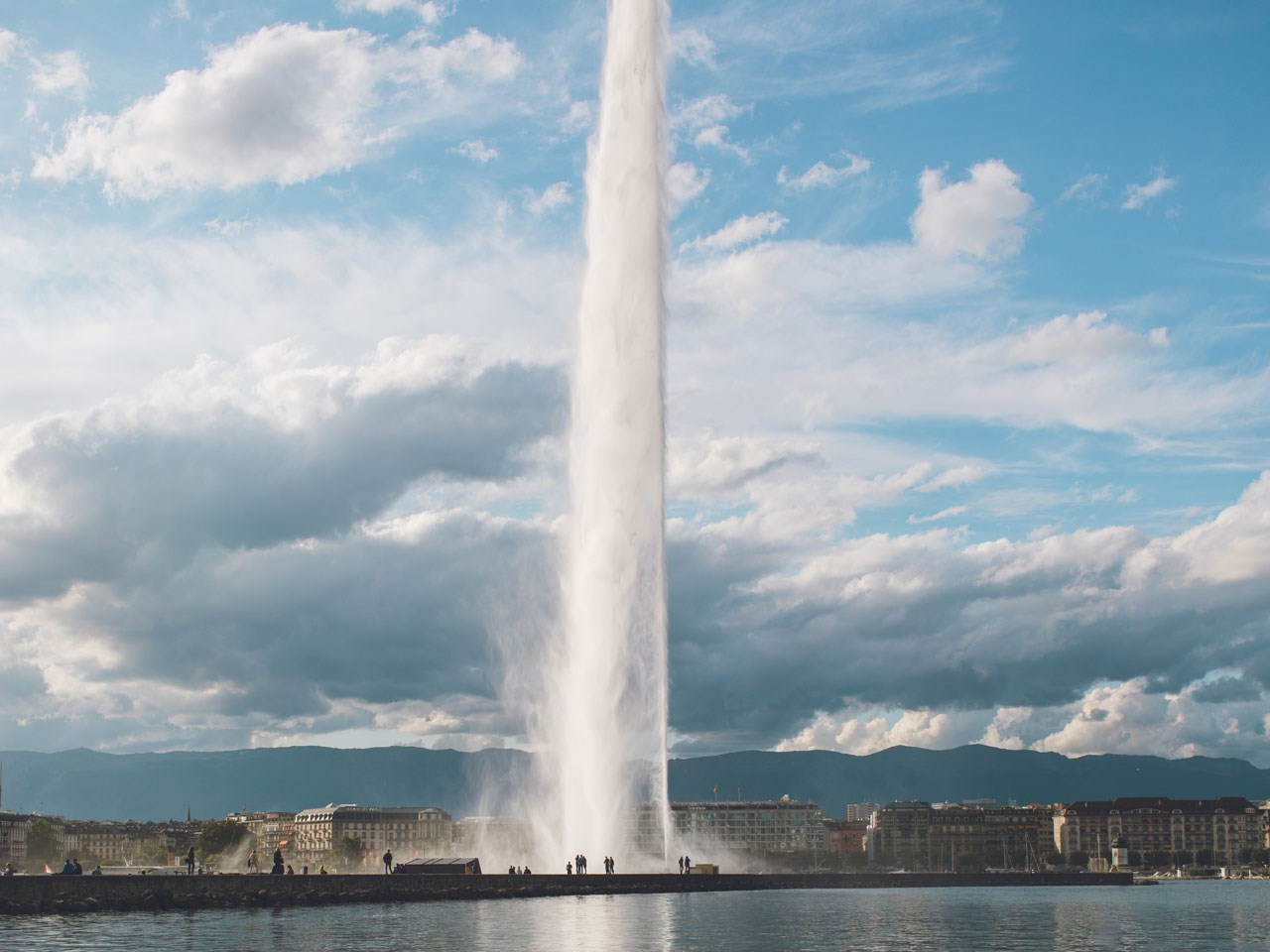



Geneva to be the auctions capital twice a year
Twice a year, in May and November, Geneva becomes the capital of high end and prestigious auctioneering. Mirroring the city's development into both Europe’s foremost center for jewelry and the watch capital of the world, auction houses such as Christie's or Sotheby's hold private sales that have been able to reach record amounts in the past years.
Christie’s Geneva lies at the heart of the city’s historic center, in a listed 16th century building once used as a dormitory for monks from the nearby Cathedral. In June 1968, the firm's first ever auction in Switzerland included a collection of porcelain bearing a Royal provenance. Over the years, more than 250 auctions have been organised in various categories of art.
Located in the historic Beau-Rivage Hotel on the shore of Lake Geneva, Sotheby’s Geneva has played host to sales of jewellery and watches for 35 years. The famous collections entrusted to Sotheby’s Geneva include the jewels of the Duchess of Windsor. Recent world records for jewels set in Geneva include the Blue Moon of Josephine, which sold for $48.5m in November 2015 (beating the previous world record set by Sotheby’s Geneva with the sale of the Graff Pink for $46.2m in 2010), and the Sunrise Ruby ($28.3m, 2015). Sotheby’s watch sales in Geneva continue to attract connoisseurs and watch-lovers alike from around the globe. Rare vintage timepieces with impressive provenance are sold alongside some of the most innovative complications today’s major watchmakers have to offer.
“L'esprit de Genève” – a superior wine that reflects the spirit of Genève
“L'Esprit de Genève” is a superior wine that reflects the spirit of openness, humanism, diversity, innovation and quality that characterises Geneva itself.
“L'Esprit de Genève” – which means the Spirit of Geneva – is made by 19 local winemakers who together aspire to grow the reputation of Geneva wine beyond cantonal borders. The original idea came about as a result of promising reactions to Geneva wine, notably in the Swiss-German part of Switzerland that suggested the need for a great Geneva specialty wine.
Raised partially or completely in oak barrels, “L'Esprit de Genève” is a red blend composed of several varieties that account in large part for the excellent reputation of Geneva wines : low-yield Gamay, which contributes fruity, spicy notes and freshness; new flagship red varieties Gamaret and Garanoir that ensure harmony – the first because of its tight tannins and structure, the latter because it adds roundness and finesse. Each winemaker is free to select other red varieties from the rich selection grown in Geneva to add to the blend and further personalise their wine.
The quality of “L'Esprit de Genève” wines is ensured because winemakers have to follow strict rules laid down in a charter, and the wines are blind-tasted and approved by the group together before they can be marketed.
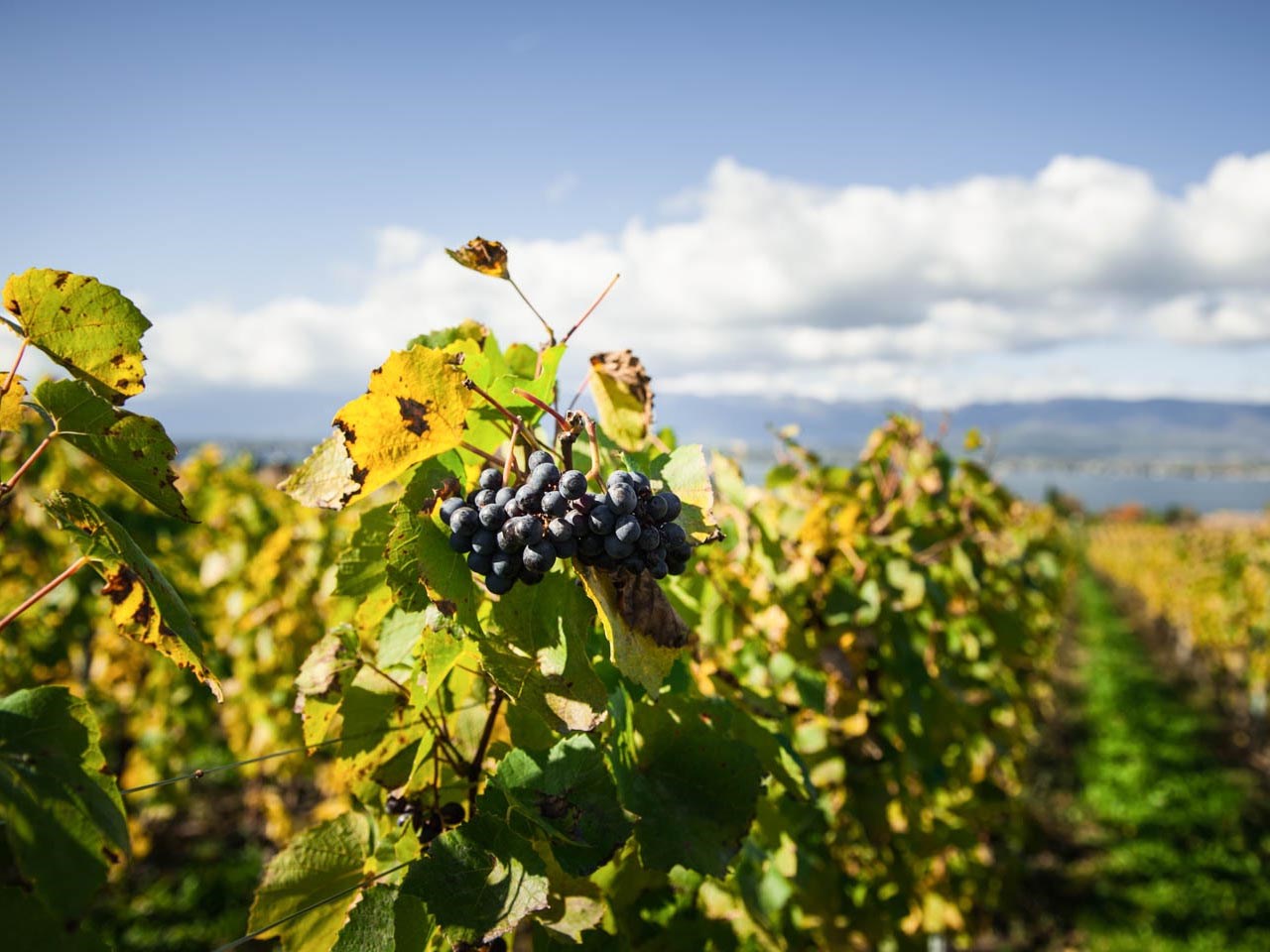

Want to know more? This is just the beginning of your next story about Geneva!
Feel free to contact us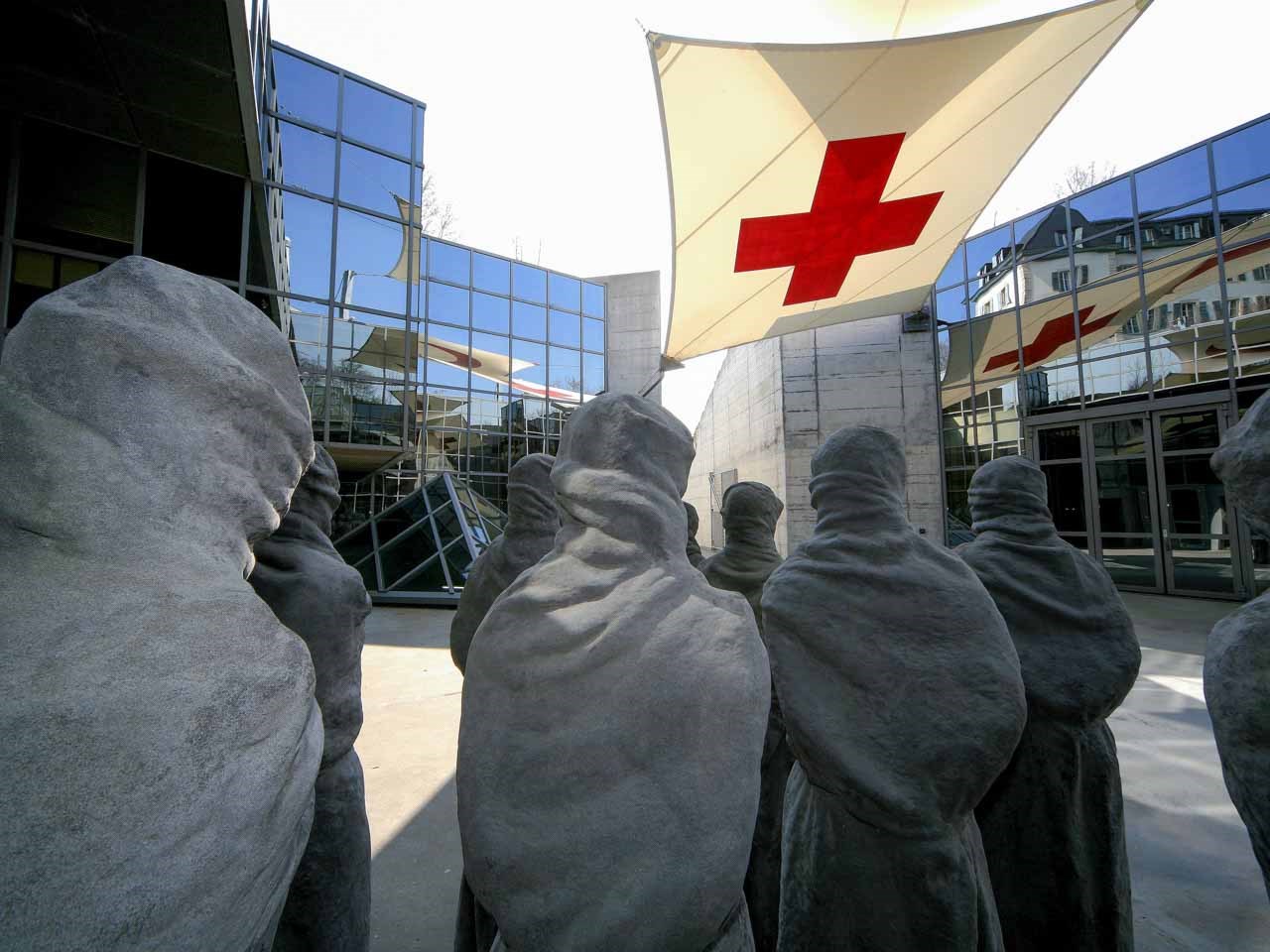

Henri Dunant or the origin of the Red Cross and Red Crescent
The Red Cross was created by a Genevan who received the Nobel Prize in 1901.
Henry Dunant was born in Geneva on 8 May 1825 in a religious and humanitarian family. From the age of 26, he started evolving in the business world and later on became president of the Financial and Industrial Company of Mons-Gémila Mills in Algeria. Needing water rights for his firm, he wanted to address the Emperor Napoleon III directly. However, at this time, the Emperor was in the field directing the French armies who with the Italians were trying to drive the Austrians out of Italy. On 24 June 1859, Henry Dunant was in Solférino, northern Italy, during a battle that left 40’000 dead and wounded soldiers. With the help of the local people he tried to organize first aid. He was deeply affected by what he saw and when he returned to Geneva, he started thinking about an organization that would help and treat the war-wounded. In 1863, with four acquaintances, he created a committee that would later become the International Committee of the Red Cross (ICRC). The meeting took place in an apartment in the Old Town, the house still stands and can be seen there. One year later, the Geneva Convention was signed in Geneva.
Today, visitors can explore the Red Cross and Red Crescent Museum to better understand the objectives and the work of this humanitarian organization.
The sheep that are hired by the city of Geneva
Geneva is set in a beautiful environment and is willing to protect it and encourage green initiatives. Don't be surprised then, if during a Sunday stroll or an evening picnic in La Grange Park you spot a group of sheep!
Since 2014, they have been hired by the city of Geneva to mow the park's grass in summertime. This initiative is part of a program called Urbanature whose purpose to bring nature back into the city. The advantage of using sheep is that they clean the park as well. Now if that isn't better than a traditional mower and it is ecological! Furthermore, kids who play in the park are always happy to stop by and say hi to those lovely animals. This is not the only environment-friendly initiative that you will find in the park; it also offers flower-filled meadows as well as beehives.
The La Grange Park is part of Geneva's 310 hectares of green areas that represents 20% of the city territory.
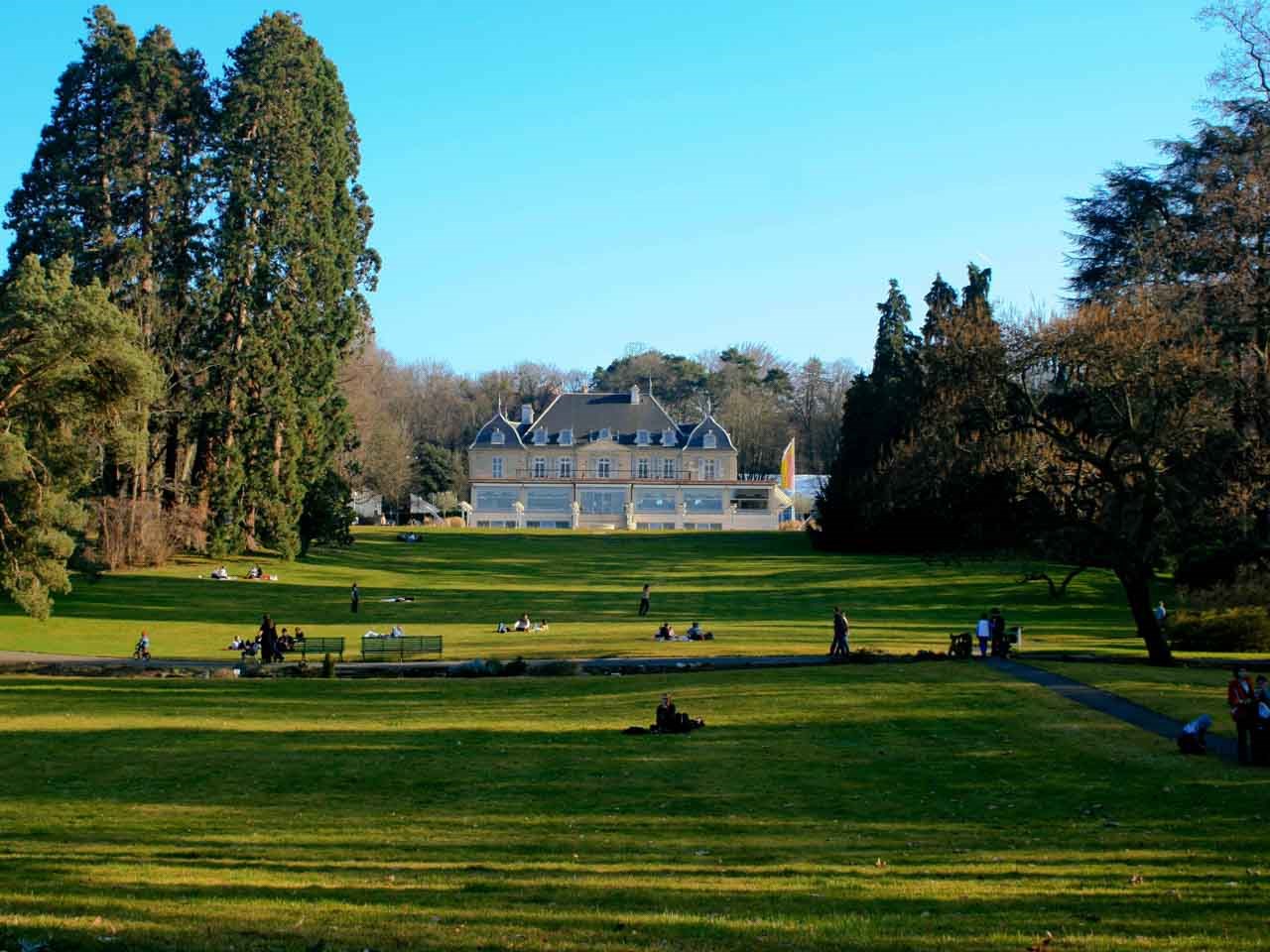

The common point between Rio de Janeiro and Geneva
What is the common connection between Geneva and Rio de Janeiro? At the heart of the Bastions Park, the main protagonists of the Reformation, John Calvin, William Farel, Theodore Beza and John Knox, are depicted in giant statues and bas-reliefs. Geneva's Post Tenebras Lux motto is engraved in stone. This iconic monument was sculpted by Paul Landowski who is also known for his work on the Cristo Redentor, one of the most famous monument in Brazil.
The Reformation Wall was inaugurated in 1909 for the 400th anniversary of Calvin's birth and measures around 100 metres in length. The four main characters are five metres high and are surrounded by six additional figures.
As you leave the park, explore the splendid Place de Neuve and its various artistic haunts.
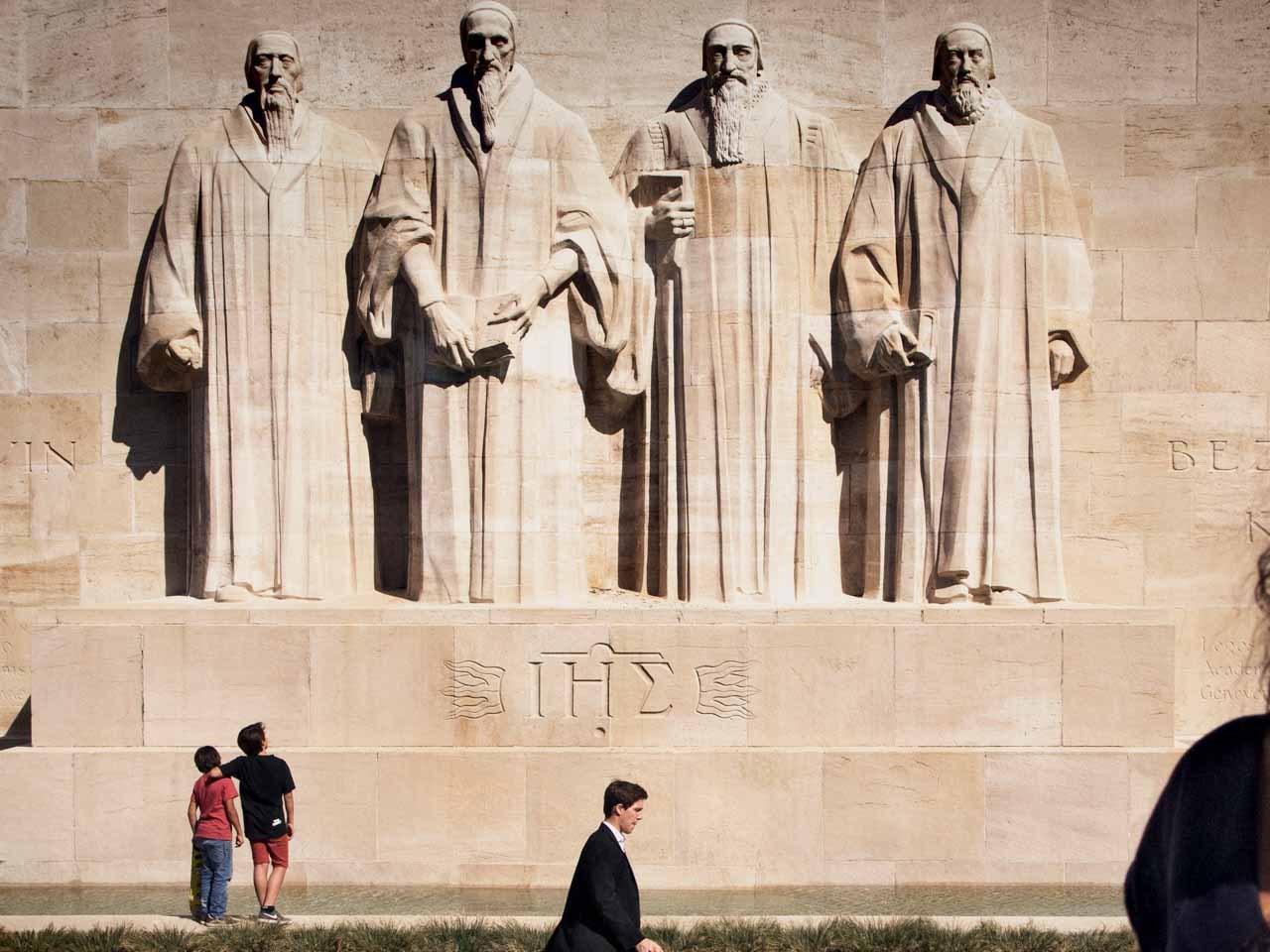

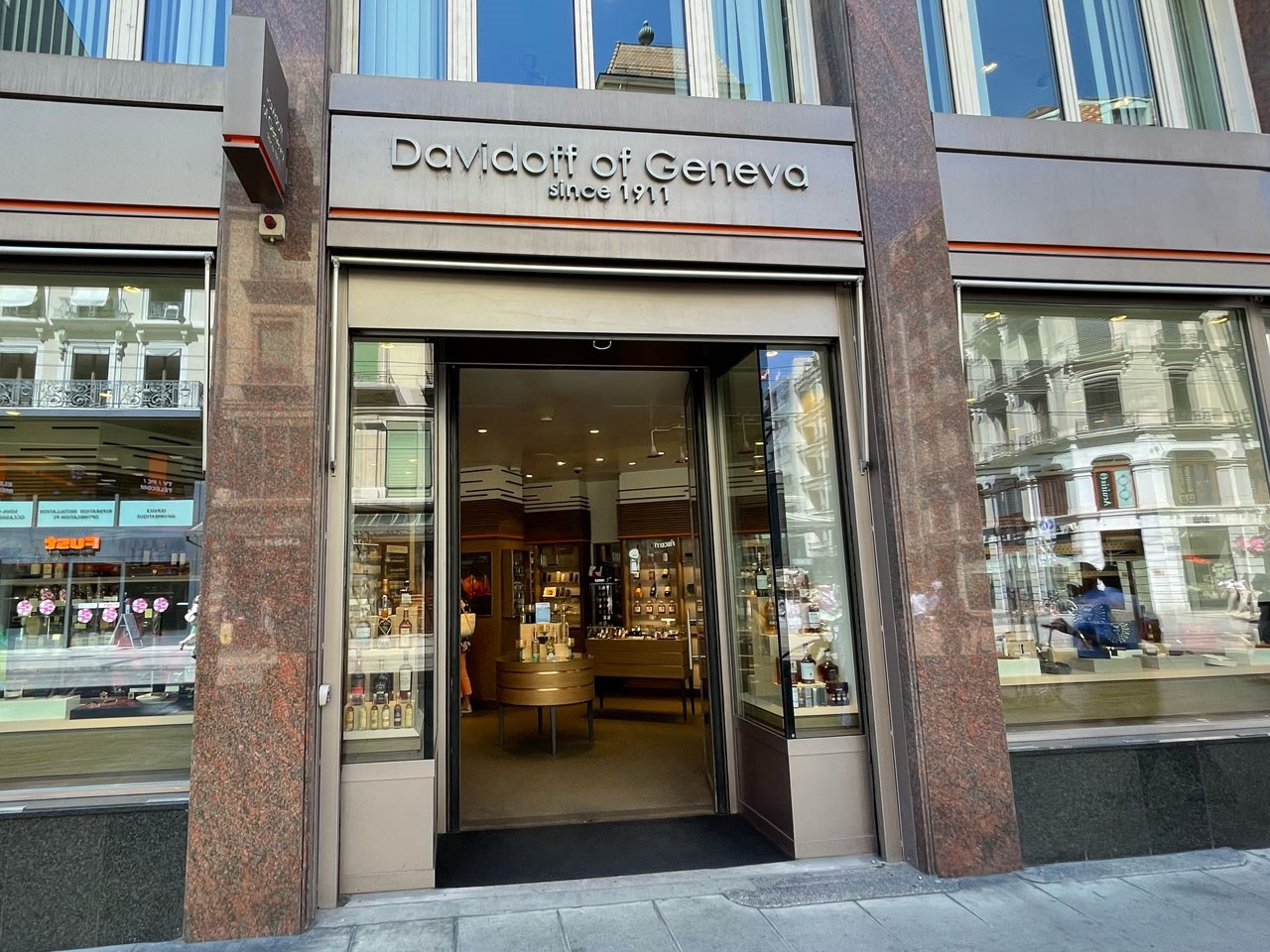

Davidoff - the name says it all
At the age of five, Zino Davidoff left Russia with his family. After three long months of a trying journey, the Davidoffs arrived in Geneva where Zino's father opened a tobacco store on the Boulevard des Philosophes. Ironically, one of his first clients was Lenin.
Then Zino left for the Americas : Argentina, Brazil and, of course, Cuba, were his major destinations. Over the course of five years he was to learn the art of growing, drying, fermenting, blending and sampling tobacco.
After his return to Switzerland in 1929, he opened a special section in his father’s Geneva store devoted solely to cigars. The cellar which he fitted out to store the cigars according to a strict set of criteria, was an initiative never before seen on the Continent. Thanks to this innovation and his great skill, Zino Davidoff was soon to gain a reputation beyond the borders of Geneva and Switzerland : first in France, then in Europe and, ultimately the world over.
The sweetest form of Geneva's most famous pot
Legend has it that on the night of December 11, 1602, a certain Mère Royaume was concocting a soup when the soldiers of the Duke of Savoy made the mistake of venturing outside her window. She hurled a cauldron of boiling soup over the enemy soldiers as they attempted to scale the city walls, killing Savoyan enemies and helping to keep Geneva free.
Today’s heroic citizens of Geneva commemorate her feat in chocolate. The custom is for the oldest and youngest of the family to join hands and smash the chocolate pot, or cauldron, open with the words “Thus perish the enemies of the Republic!”.
The Escalade is celebrated on the weekend that falls closest to the night and early morning of December 11-12.
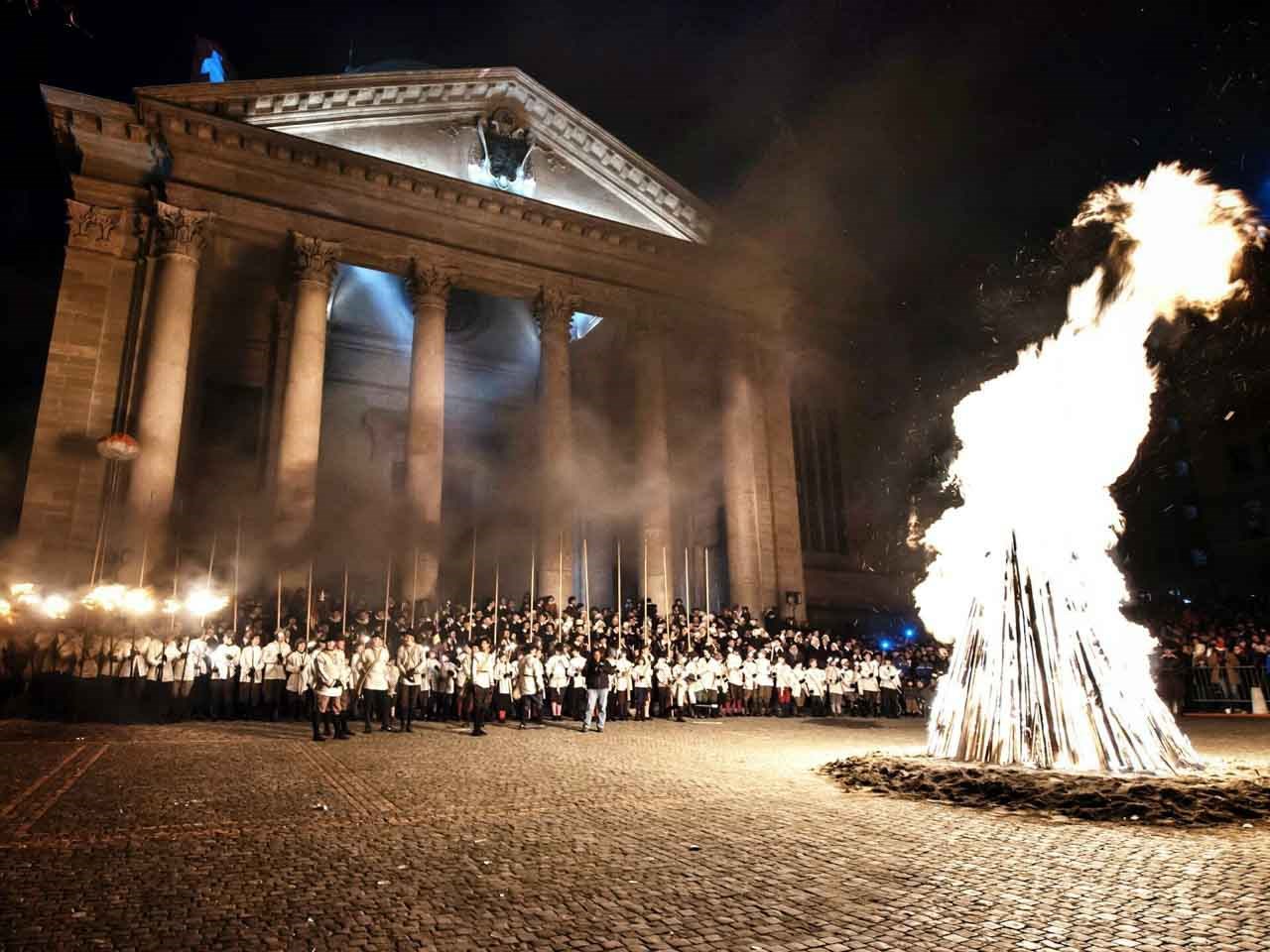

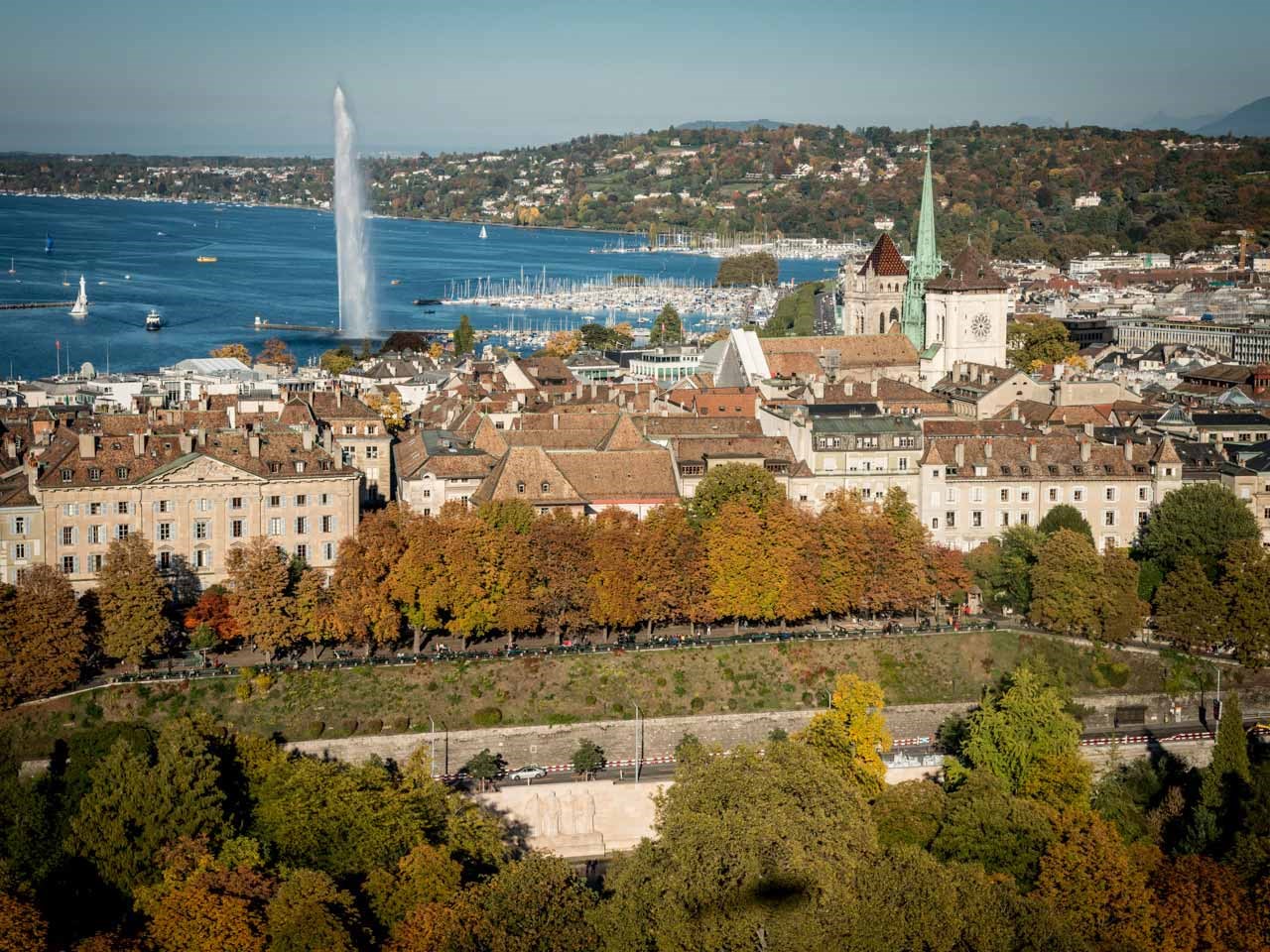

A chestnut tree: the official herald of spring in Geneva
How do you know spring has arrived? Flowers, spring showers, sundresses or swimming in the lake? In Geneva’s old town, there is a tree that is the official harbinger of spring. On the Promenade de la Treille in the Old Town of Geneva, there is a chestnut tree whose first bud marks the official arrival of spring (Marronnier Officiel). It’s known as “l’eclosion” which translates as “the hatching” or “the blooming” but in this case means “the budding.”
The first bud has been recorded since 1808! It has always come sometime between January and the beginning of April, its arrival varying considerably (but generally getting progressively earlier). Since observations began, 4 trees have been used. The original from 1818 to 1905, the second from 1905 until 1928, and the next to last since 1929. It was so bent over that it has to be propped up with a pole. The current one has been officially designated since 2015.
In 1808, Marc-Louis Rigaud-Martin began recording the tree’s first bud, likely due to something like scientific curiosity. Since 1818, all the dates have been recorded on a parchment-roll in a special place in Geneva’s State Council chamber.
Geneva the capital of peace and freedom
Geneva is home to the headquarters of 34 international organisations, such as the World Health Organisation, the World Trade Organisation and the International Committee of the Red Cross.
In all, some 29,500 international diplomats and civil servants are based in the city, of whom around 2,300 staff are working for 250 non-governmental organisations. Around 9,500 staff work for the United Nations family in Geneva, which is the largest concentration of UN personnel in the world. Above all, there are 174 states represented by permanent diplomatic missions to the UN, which gave it the "International Geneva" nickname.
Annually, Geneva is host to the largest number of international conferences and meetings (around 10,000) – 2,700 ahead of New York, welcoming 200,000 people. In addition, there are 3,000 professional and private visits by heads of state, government and ministers.
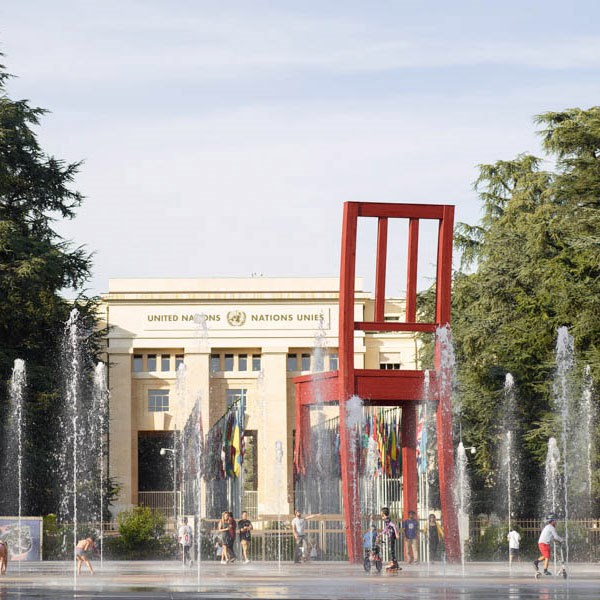

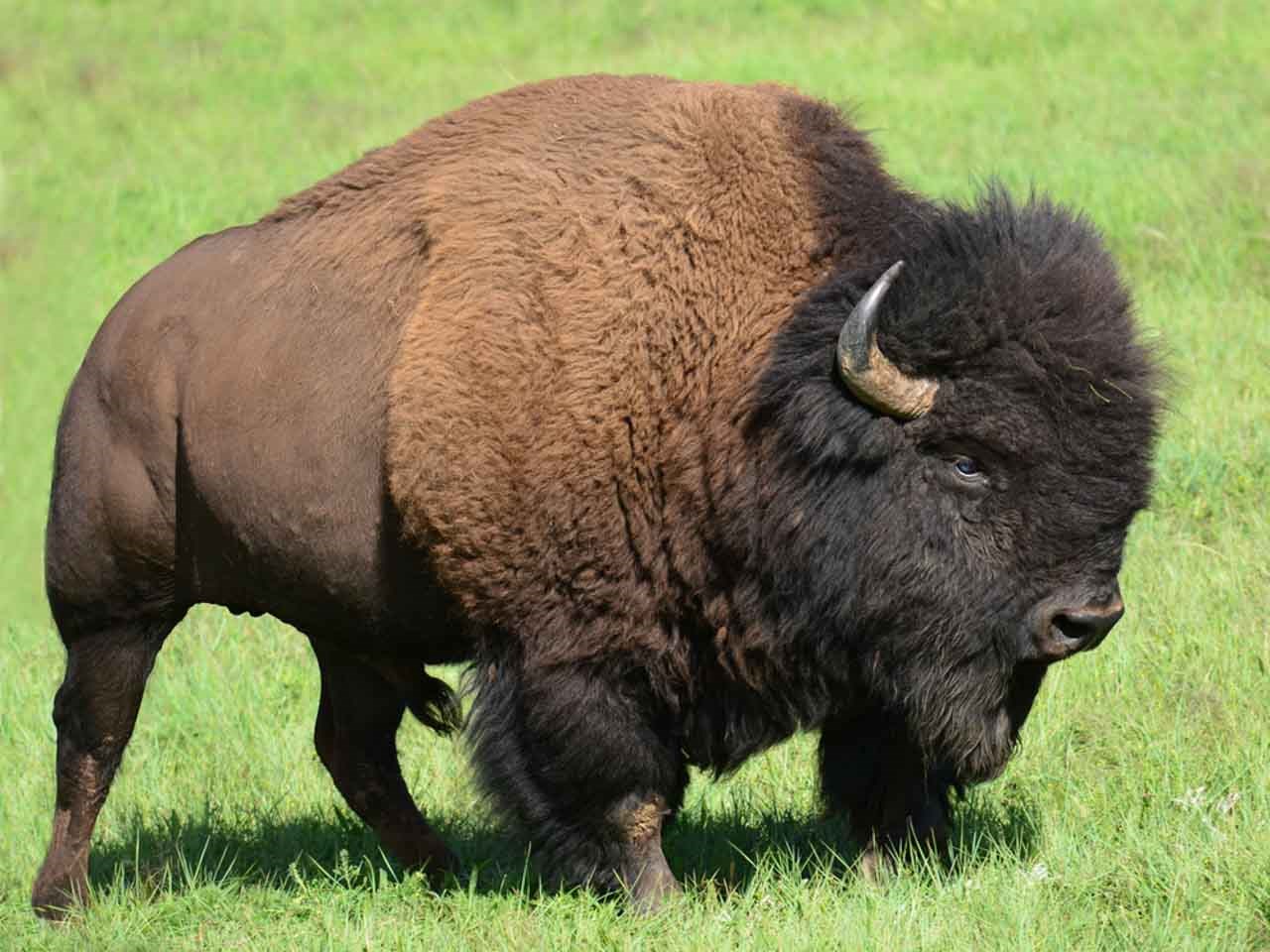

Bison, made in Geneva
A herd of bison makes for an unusual sight on the green pastures around the small village of Collex-Bossy, in the canton of Geneva. Visitors do double-takes when they first see the burly, hump-backed creatures grazing in the fields not far from the Geneva airport, against the snow-capped backdrop of the Jura mountains and the Alps.
But the bison have become an ingrained, if unconventional, part of the village’s agricultural scene. While still far from being a mainstream item sold in supermarkets, bison meat has earned a local reputation as a tasty, low-fat alternative to beef. And a small but growing number of breeders across Switzerland are now raising the wild animals, originally native to the North American prairies. They are following in the footsteps of Collex-Bossy farmer Laurent Girardet, 53, who launched a pioneering initiative more than 20 years ago. In 1990, Girardet decided to import ten bison from Alberta, Canada with the goal of raising them for meat, at the time a first for Switzerland. Now he has more than 130 of them, supplying two local butchers and several gourmet restaurants that take all he can provide.
Jean-Jacques Rousseau was born in Geneva
One of the greatest philosophers of the Age of the Enlightenment was native to Geneva.
Jean-Jacques Rousseau was born on 28 Jun 1712 at 40 Grand-Rue in the Old Town. This building still exists and has become a place of sharing and exchanging ideas and opinions, debates and literary meetings, open to the public. At Maison de Rousseau et de la Littérature, the life and work of this illustrious Genevan citizen are portrayed in a subtle synchronisation of sound and image.
There is another area in Geneva that is a tribute to the humanist, philosopher, writer and musician : the Rousseau Island. In 1832 this place was designed with an arrangement of Italian poplars and willow trees with the aim of recalling and recreating the one at lake of Ermenonville where Rousseau died on 2 July 1778. Three years later, a statue was erected in his honour and the place was renamed.
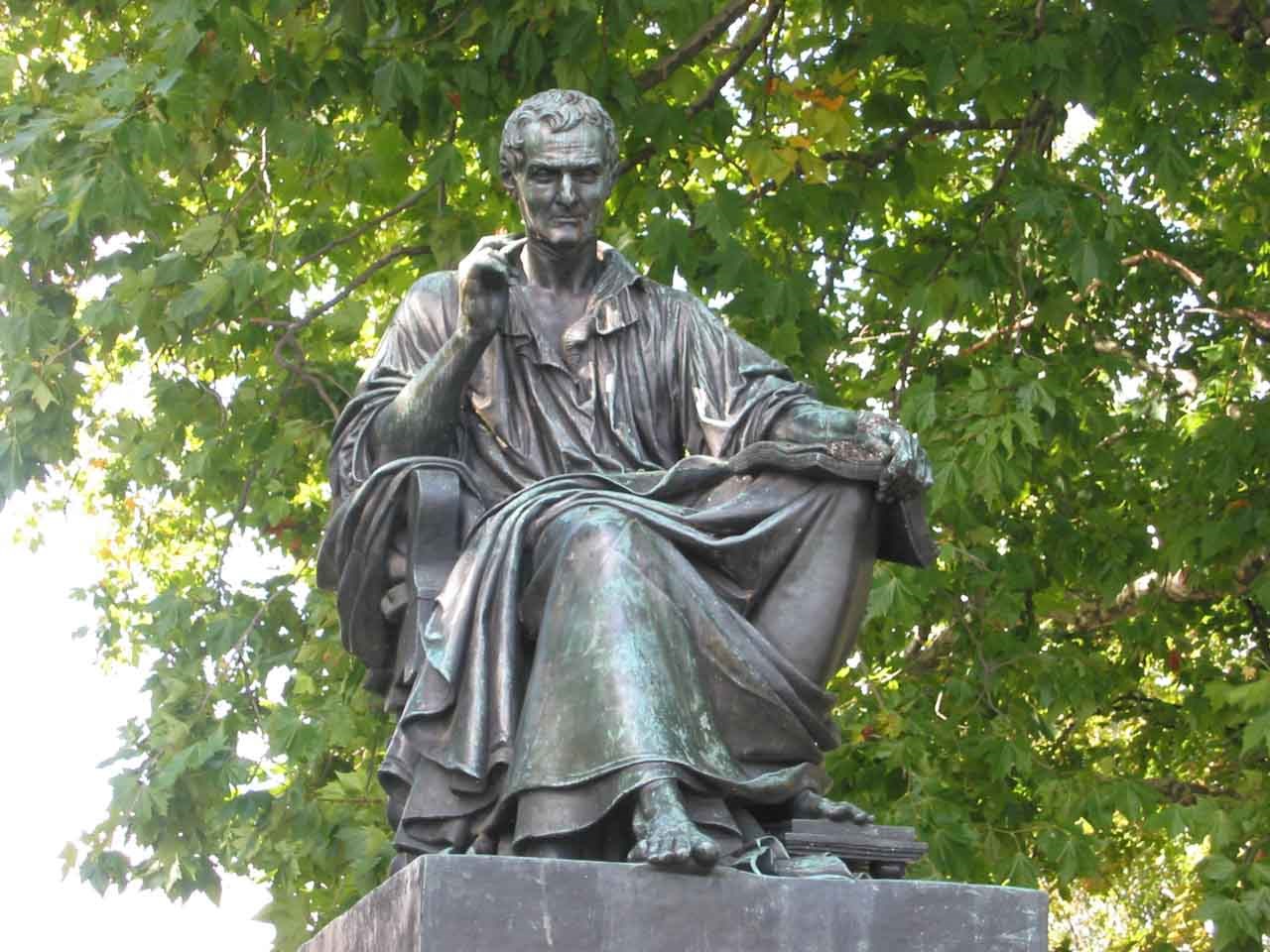

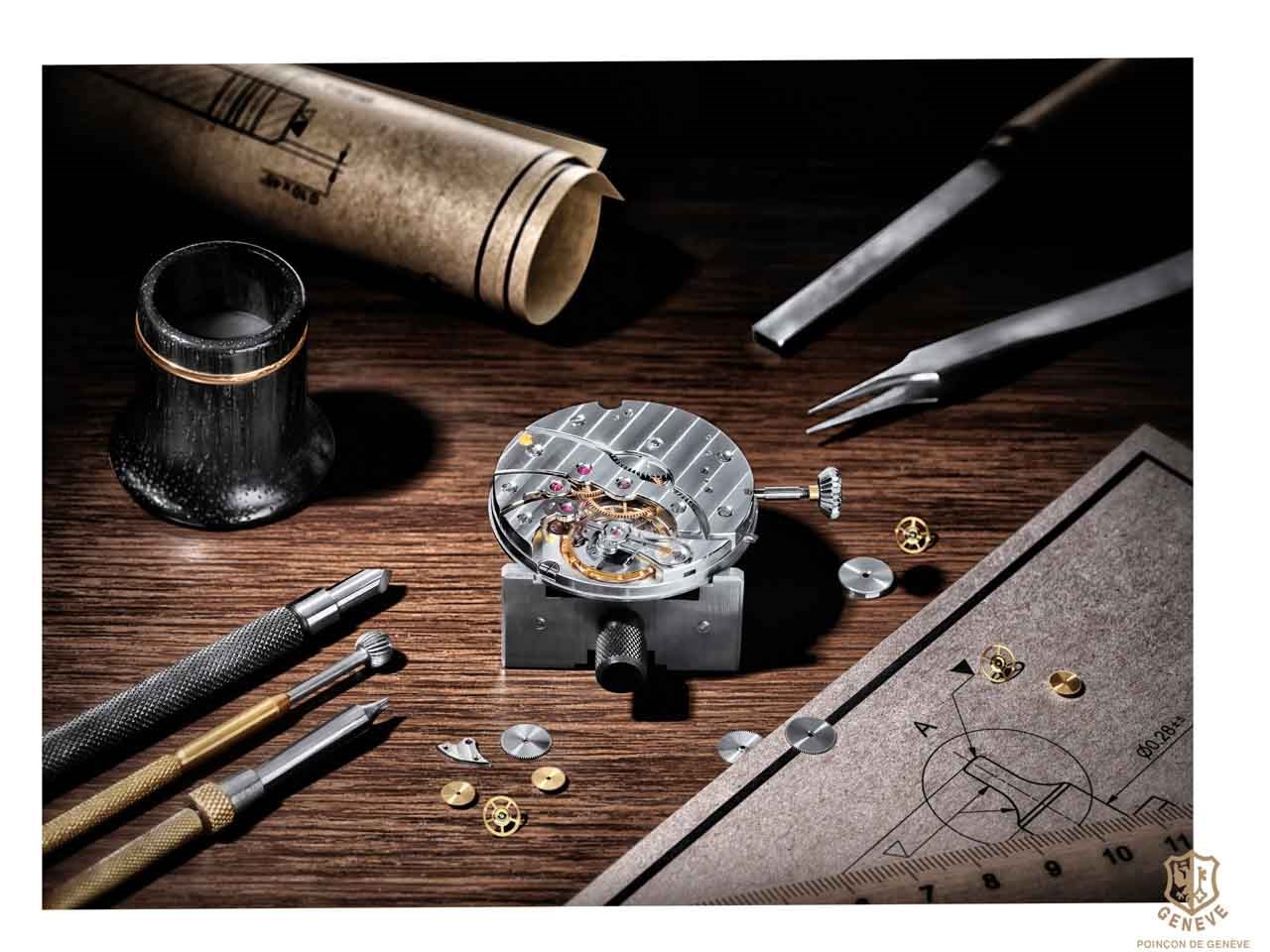

The Cabinotiers, a major contribution to Geneva's reputation in the world
Have you ever heard of a cabinotier? A cabinotier is, in Geneva, a workman employed by a cabinet. A cabinotier was not necessarily a watchmaker. He could be a jeweller, engraver, stonecutter, etc., provided he worked for a cabinet (workshop) and was employed in watchmaking (source: FHH).
In the 18th century, the cabinotiers built a solid reputation for themselves, founded on the quality of their work, their meticulousness and precision. They made a great contribution to the reputation of Geneva in the world.
They were based in the area of Saint-Gervais, on the left bank of Geneva. As they needed as much light as possible to execute their meticulous tasks, they settled down on the top floors of the buildings that counted many small windows that almost touched each other. When walking in this district, you can still today spot those windows. Women, too, were occupied in making chains and polishing watch movement parts and cases. Talented miniaturists painted on enamel, beginning the tradition of luxury watches. In 1800, the Fabrique provided 5000 of the city’s 26000 inhabitants with a living.
The Alabama room, the beginning of international Geneva
There is a specific place in Geneva that marks the beginning of international Geneva, it is the room called Alabama located in the city council building in the Old Town. This is where the first Geneva Convention was signed.
It is in this historic room that, on 15 June 1872, the first discussions between UK and USA started as the two countries had conflict due to a boat called Alabama. United Kingdom was accused by the United States to have surreptitiously armed the vessel in the aim to destroy some northerners merchant ships and their load during the Civil War. The tribunal ended the conflict between the two nations and closed with an agreement signed on 14 September 1872. The US were hoping to receive the Canada as an indemnity but in the end the arbitrators determined that UK had to pay 15,5 million dollars in gold as a compensation.
A few years earlier, on 22 August 1864, the Geneva Convention - the founding act of the International Committee of the Red Cross - was signed in the very same room.
Geneva is known for being a neutral place where the interested parties meet and try to reach agreements.
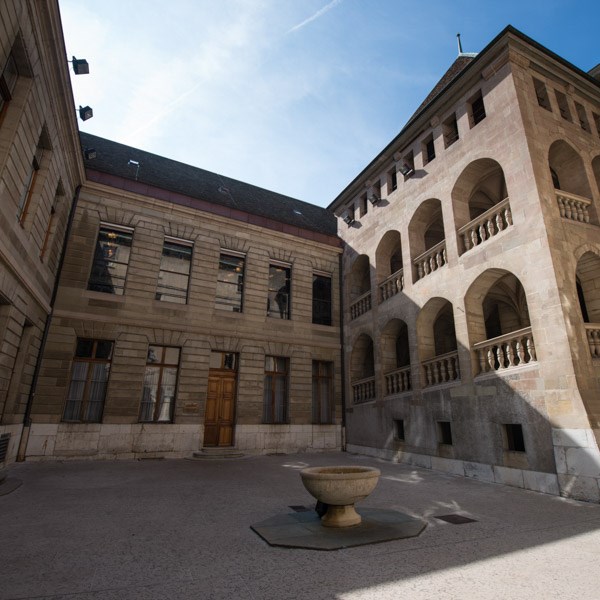

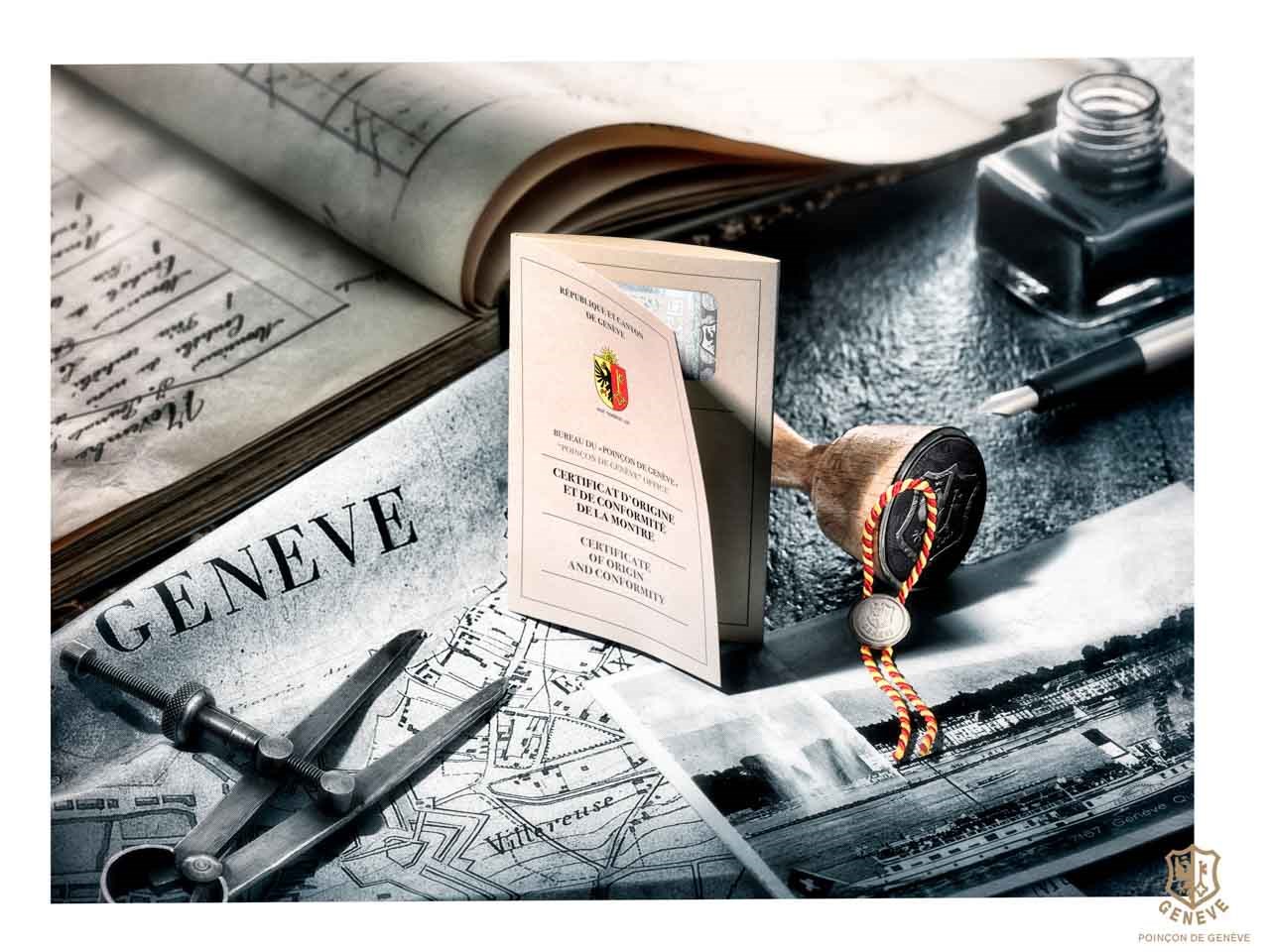

Poinçon de Genève – the exclusive “made in Geneva” certification
Introduced by the Republic and Canton of Geneva in 1886 as the ultimate standard of excellence and an emblem of Geneva’s fine watchmaking expertise, the Poinçon de Genève is synonymous with provenance, quality craftsmanship and reliability.
Geneva’s horological know-how has spread around the world over several centuries. The Poinçon de Genève is a guarantee of authenticity, of a product made by the finest craftsmen in the Republic and Canton of Geneva, whose success is renowned worldwide. Only a few select watchmakers and “manufactures” based in Geneva have been awarded this certification.
A watch bearing the Poinçon de Genève is not only an instrument for measuring time, it is a work of art. To obtain this distinction, each watch component must be made with the utmost care, and finely decorated. The Poinçon de Genève is synonymous with exceptional aesthetic quality, and guarantees that the product purchased is flawless and unique, a source of great sentimental, artistic and material value.
The beauty of a watch must serve to showcase its accurate operation. For this reason, the Poinçon de Genève subjects every watch to a number of tests to ensure their quality and reliability. A watch with Poinçon de Genève certification offers the assurance of a fine timepiece made using the latest technologies for reliability and precision.
Discover some of genevas most appreciated dishes
Geneva is considered the gourmet capital of Switzerland with 59 restaurants distinguished with awards by the Michelin and GaultMilau guides. Discover its local dish specialities.
The quintessential Geneva vegetable is the Plainpalais Cardoon AOC which is the result of crossing different varieties of a plant that originated in the Mediterranean basin. You can find fresh cardoons on the local markets at the end of the year or all year round in the shops. This dish is usually consumed during the end of year holidays.
Another dish is the Longeole sausage which is a pork speciality. Legend has it that it was invented by a monk called Père Longeot, who added fennel seeds and rind to the usual stuffing.
All around Lake Geneva, people love having perch fillets that come directly from the lake’s fishermen. It is cooked with butter and served with French fries.
Let's not forget that with 30 master chocolatiers, Geneva is the paradise for chocolate lovers and offers a wide range of specialties such as Les Pavés de Genève. Created in the thirties, those little cubes of chocolate, dusted with the finest cocoa powder, melt in the mouth. In December, you can also spot plenty of chocolate cauldrons in the shops to mark the Escalade event.
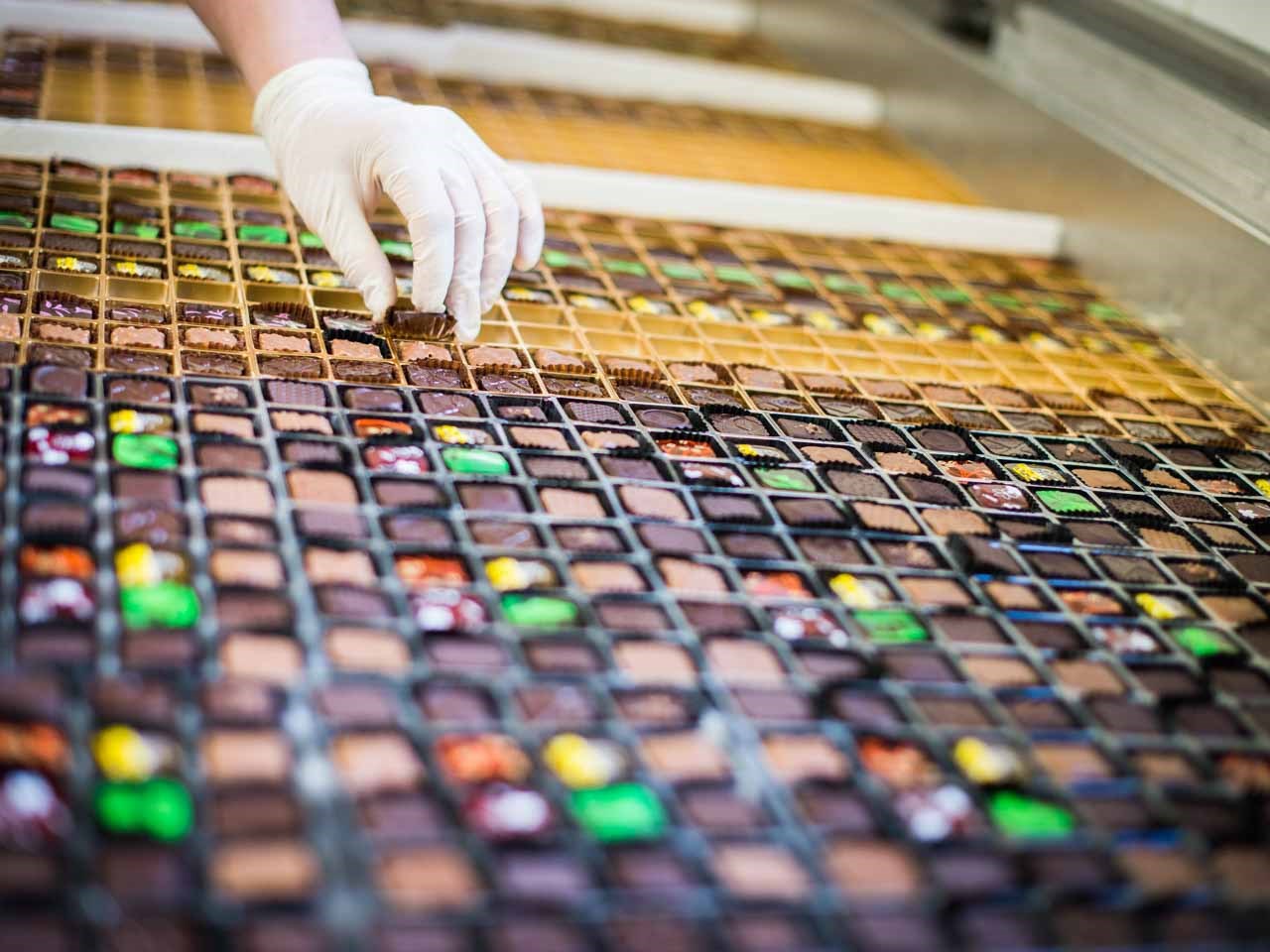

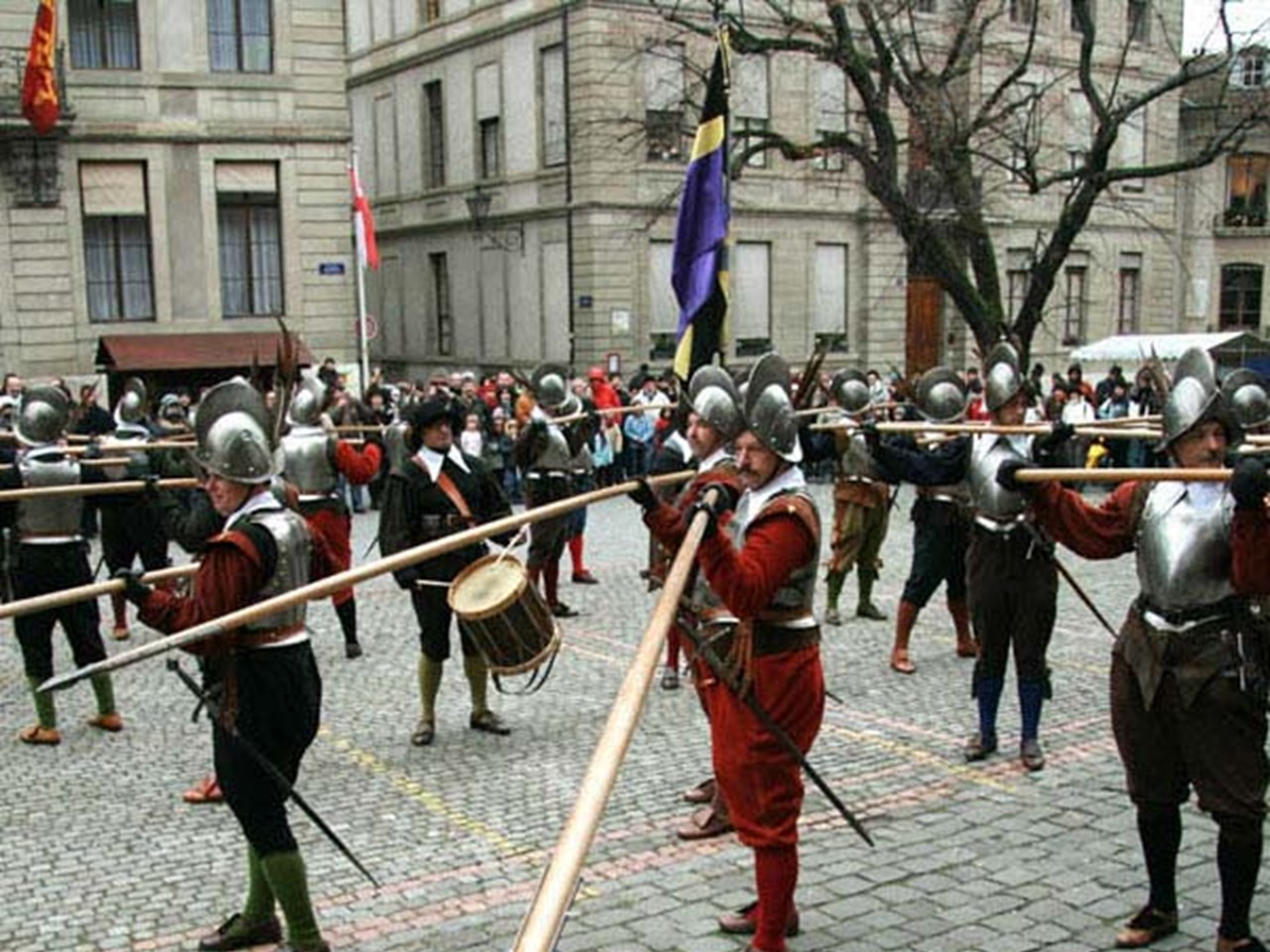
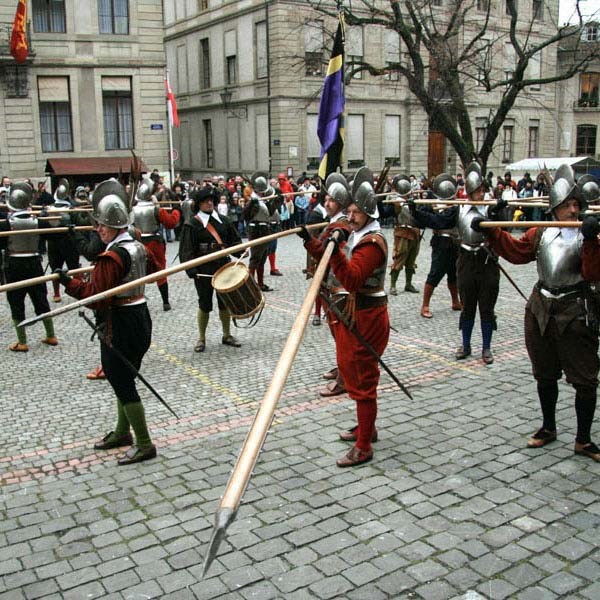
Escalade: celebrating genevan liberation
The French "Escalade" (English : scaling or climbing) is a celebration commemorating an ill-fated attempt to scale the walls that once surrounded Geneva. On the night of December 11, 1602, the Duke of Savoy tried to seize the city with ladders. Legend has it, that a pot of boiling soup stopped the incursion. Geneva's Old Town provides the best vantage point. Its narrow, winding streets fill up with revellers singing "CE QU'E LAINO", which commemorates the events of 1602 in old Genevese dialect. Children in Halloween-like costumes roam the local bistros asking for a treat, while members of the "Company of 1602" patrol on horseback in period costumes complete with pikes and lances. Demonstrations of period armaments take place in the Parc des Bastions. The alarm is sounded at the Cathedral and the fife and drum corps marches on parade.
On Sunday, a torchlight procession through darkened streets in the Old Town leads to a bonfire in Cathedral square. One of the surprises of the "Escalade" is the Passage Monetier, open to the public only once a year. This takes visitors along the base of the old fortification walls under the Cathedral, offering a palpable look at Old Geneva. Those who brave the passage at night receive cups of hot wine to ward off the cold.
Carouge: historic courtyards & mysterious gardens
Just ten minutes ride from the bustle of the city of Geneva, visitors stumble on a uniquely "Mediterranean" corner of Switzerland : Carouge. Behind the neatly restored façades, an unexpected world opens in front of us : hidden courtyards, secret gardens, a small world, typically “carougeois”. Getting here from Geneva's city centre could not be easier. Several tram and bus lines cross the River Arve, for centuries the political, as well geographic boundary that separated Protestant Geneva from Catholic Savoy. Indeed, Carouge's past - which essentially amounts to less than 250 years - has much to tell us about the history of its larger neighbour. In 1754, Geneva's rulers agreed to give up Carouge, which became part of the Piedmont-Sardinian Kingdom, the name by which the House of Savoy became known.
Italian architects were drafted to design Carouge, and little by little, the Savoyard village was transformed into a typical Piedmont town. The rows of distinctive two- or three-storey houses that were built in the late 18th Century remain one of Carouge's biggest attractions. One of the features of Carouge's houses is the wooden balconies that overlook hidden inner gardens and courtyards, some of which can be visited by the public.
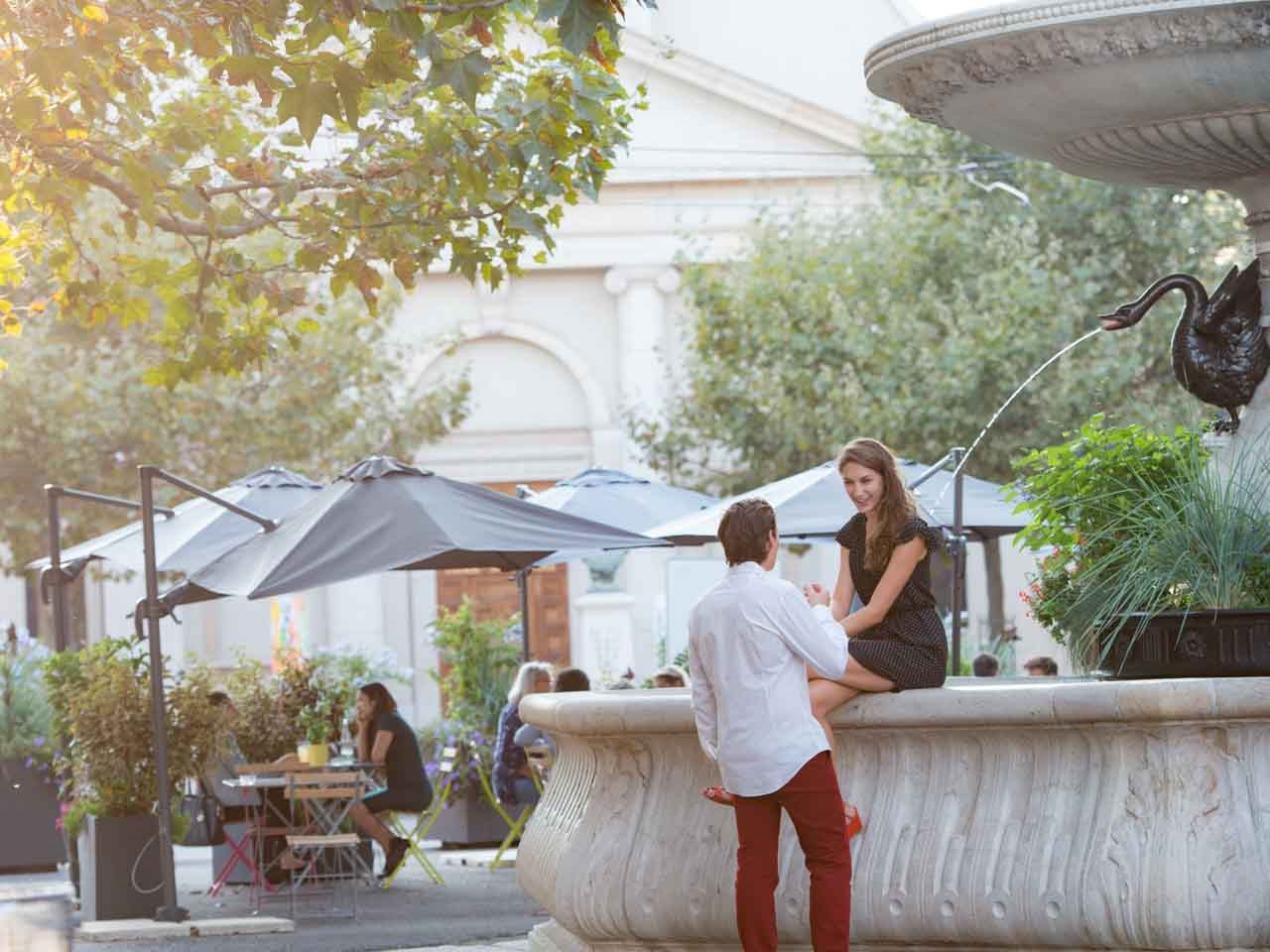

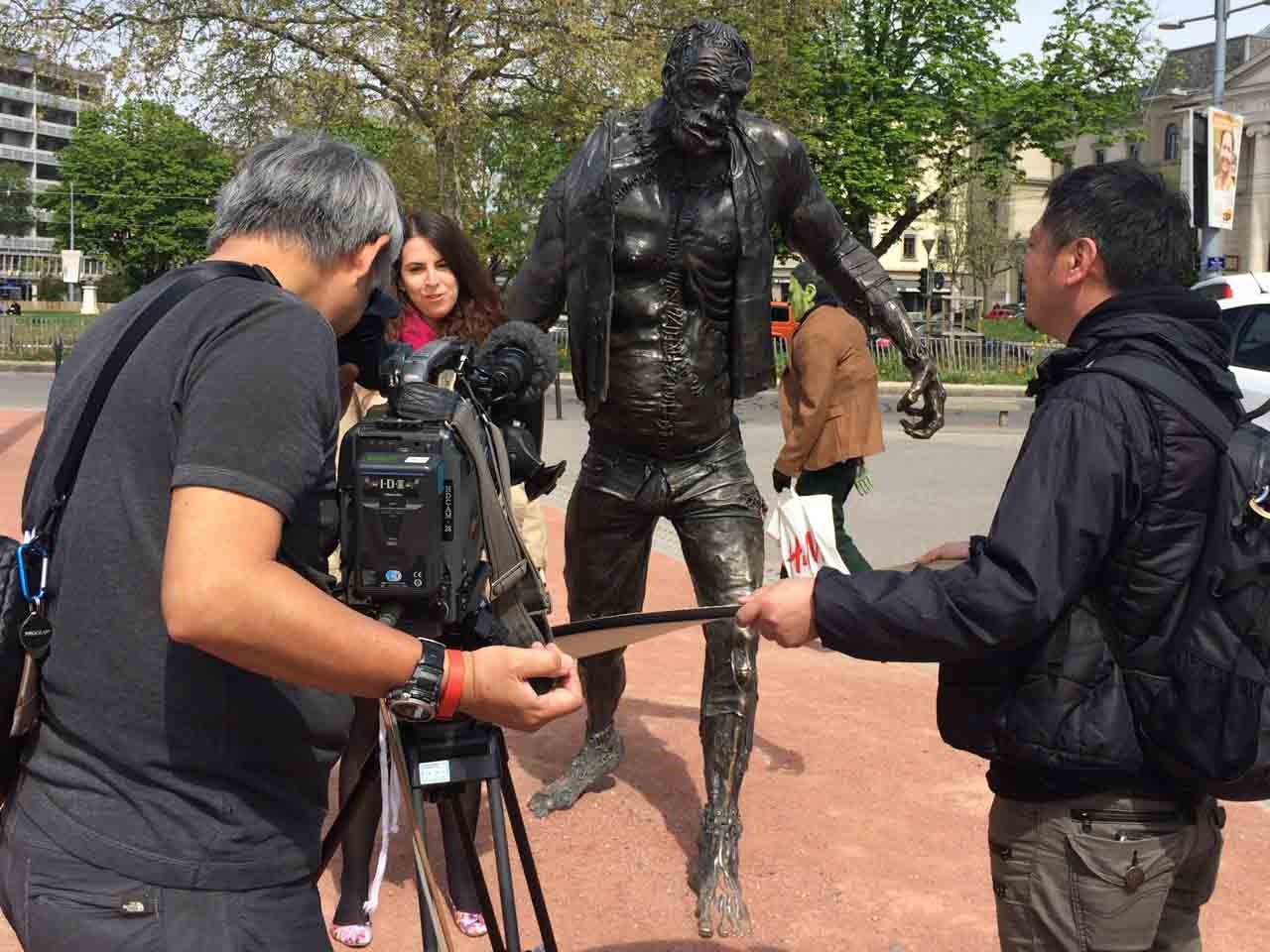

Frankenstein emerged on the shores of Lake Geneva
Of English origin, Mary Shelley was born on August 30, 1797. Her father was a philosopher and an author, her mother, a feminist. Surrounded by intellectuals from an early age, she benefited from an intensive literary upbringing. At the age of 16, she married the poet Percy Bysshe Shelley with whom she toured Europe and above all, Italy. These travels were to inspire many accounts and short stories. After a stay of several months in Geneva, the couple returned to England where Mary continued to write. The monster Frankenstein took shape during a stormy night in Cologny in 1816 as the result of a wager. In an effort to ignore the pounding rain, Mary, her husband and friends began exchanging ghost stories. Then they challenged each other to write one during the night. That is when Frankenstein was born. In the original account, the creator of the monster was a young Genevan scientist named Victor Frankenstein. If one treads in the monster’s footsteps, one is led to some of the most beautiful sites in the Geneva area. The novel, completed in 1818, remains a model of horror literature.
The Villa Diodati, Lord Byron’s residence, where the “eerie” challenge took place is no longer accessible to the public. Nevertheless, the owner family still open its gardens to the media from time to time. In 2016, Geneva has celebrate the 200-year anniversary of the writing of the Frankenstein novel.
Greening the United nations in Geneva
The United Nations Office at Geneva (UNOG) is the second largest United Nations centre after the United Nations Headquarters in New York. UNOG is housed in the Palais des Nations, an outstanding testimony to twentieth century architecture, situated in a beautiful park in Geneva overlooking Lake Geneva, with a splendid view of the Alps and, on a clear day, the Mont Blanc.
Greening the United Nations in Geneva.
Secretary-General Ban Ki-Moon committed the United Nations to the creation of its own internal practices for making the Organization more climate neutral. During the past years much has been done to decrease UNOG’s energy consumption and CO2 emissions. UNOG also pursues its actions in order to develop the use of renewable energy. The most significant initiatives and achievements are for instance :
-
Cooling of the buildings with the water of the Leman Lake.
-
Fuel oil has been replaced by natural gas for winter heating.
-
Replacement of the lighting fixtures at the Palais des Nations with energy efficient ones.
-
Replacement of the flushes of the toilets.
-
Recycling programme for waste is on-going
-
Bees have produced UN honey for the first time in 2013.
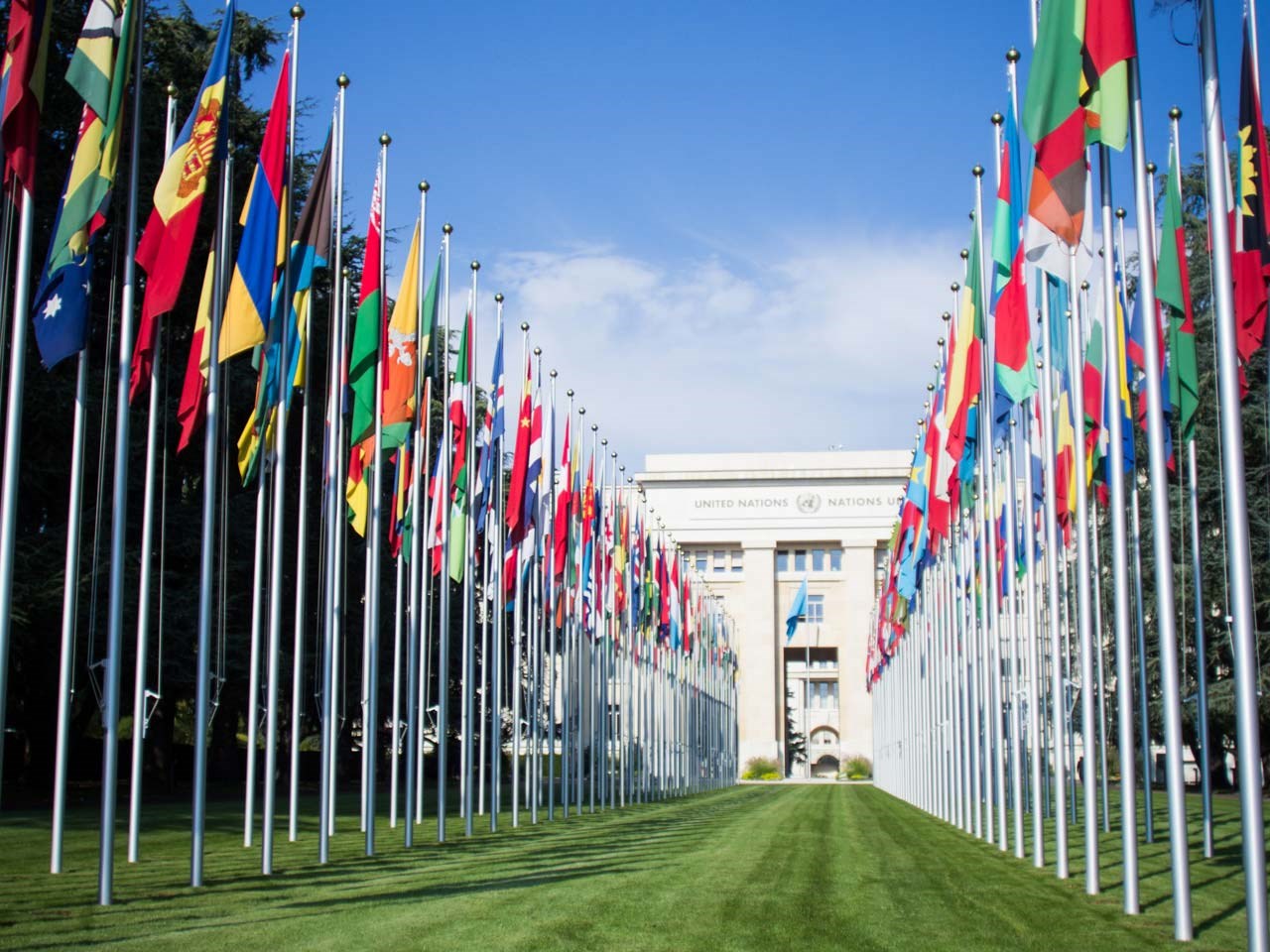

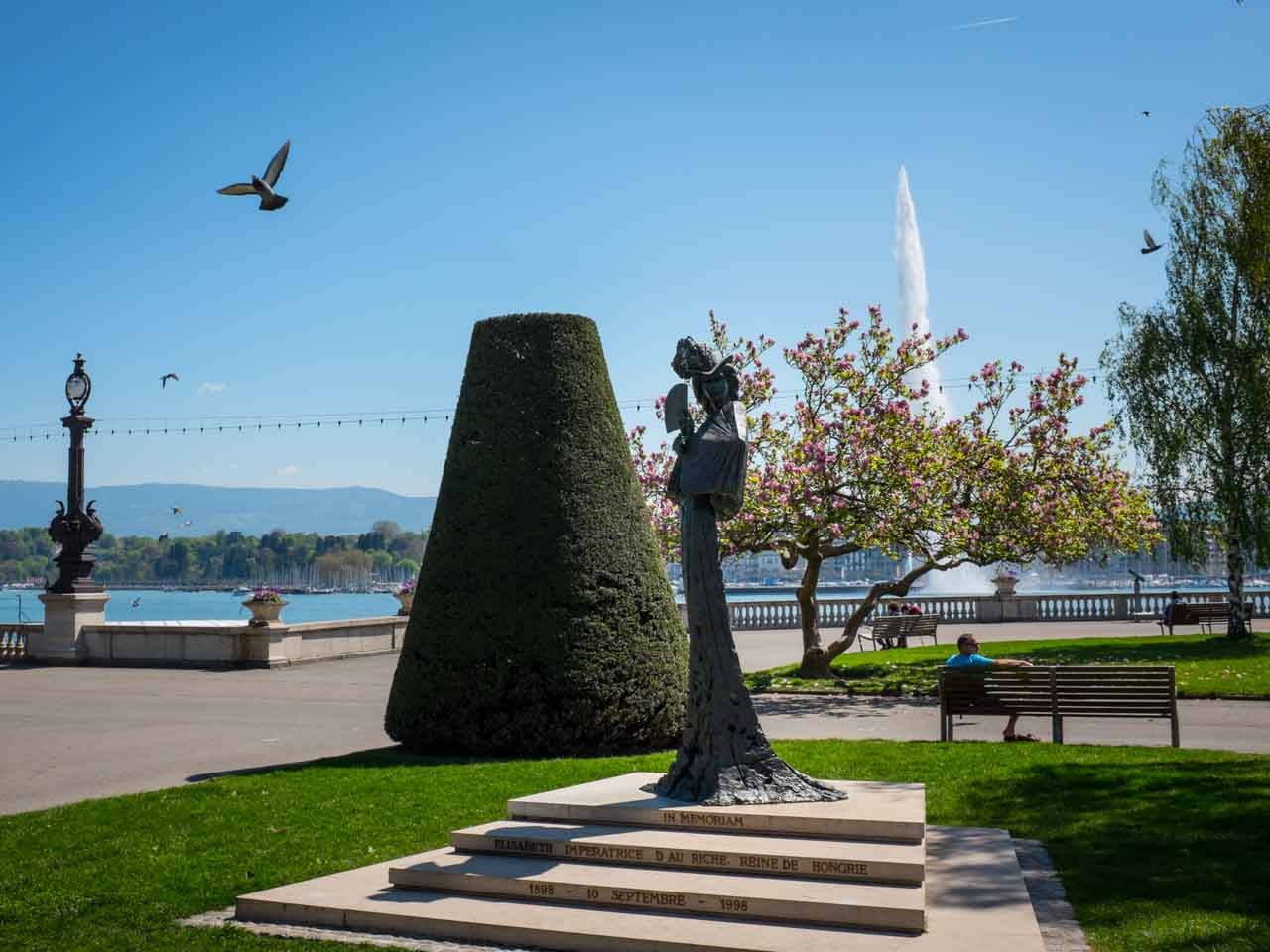

Geneva a well-known place for some of the greatest names of bygone centuries
Geneva is a cosmopolitan city and through the centuries has been visited by many people, some amongst them with famous names. Geneva is proud of its long-standing tradition of excellence, perpetuating it in the various fields of hospitality expertise and today is home to 13 five-star hotels.
Prominent, well-known people stayed in some of them or even decided to settled down in the area. Amongst them Jorge Luis Borges, the famous Argentine author; Richard Burton, the actor of Welsh origin; Albert Cohen, the writer; Colette, the famous French novelist and critic; Fédor Mikhaïlovitch Dostoyevski, the Russian writer of Crime and Punishment; Ferdinand Hodler, the painter of William Tell; Vladimir Ilyich Ulyanov Lenin, the father of the Russian Revolution; Franz Liszt, the Hungarian virtuoso; Mary Shelley, the author of Frankenstein; Voltaire, the poet, historian, philosopher and author; Richard Wagner, the highly talented German composer; Thomas Woodrow Wilson, the US President and Sissi, the Austrian Empress.
The jonction, where the rivers meet, negotiate, and merge
Jonction is a place where the Rhône and Arve rivers join together, which creates a beautiful and unique natural phenomenon. The two rivers have different colours of water and when they come together, their waters mix, shuffle and join together into the one final river, Rhône. You can watch this scenario best from the bridge, situated conveniently just 40 metres after the Jonction (confluence).
The southern Arve river is faster and flows more rapidly, moving the white sand, that's why it is almost milky white, while the northern river (coming from the lake), Rhône, is slower and darker.
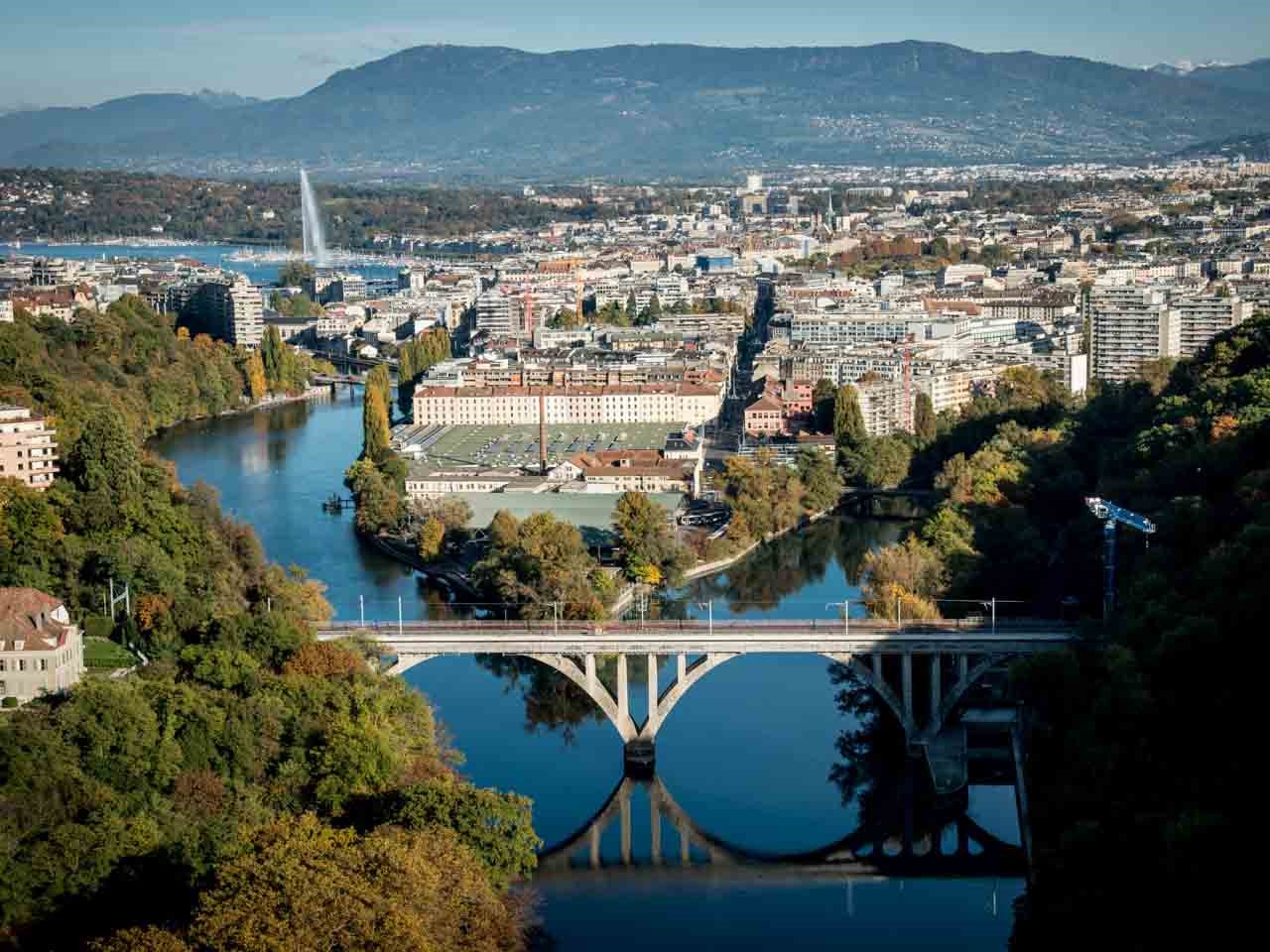

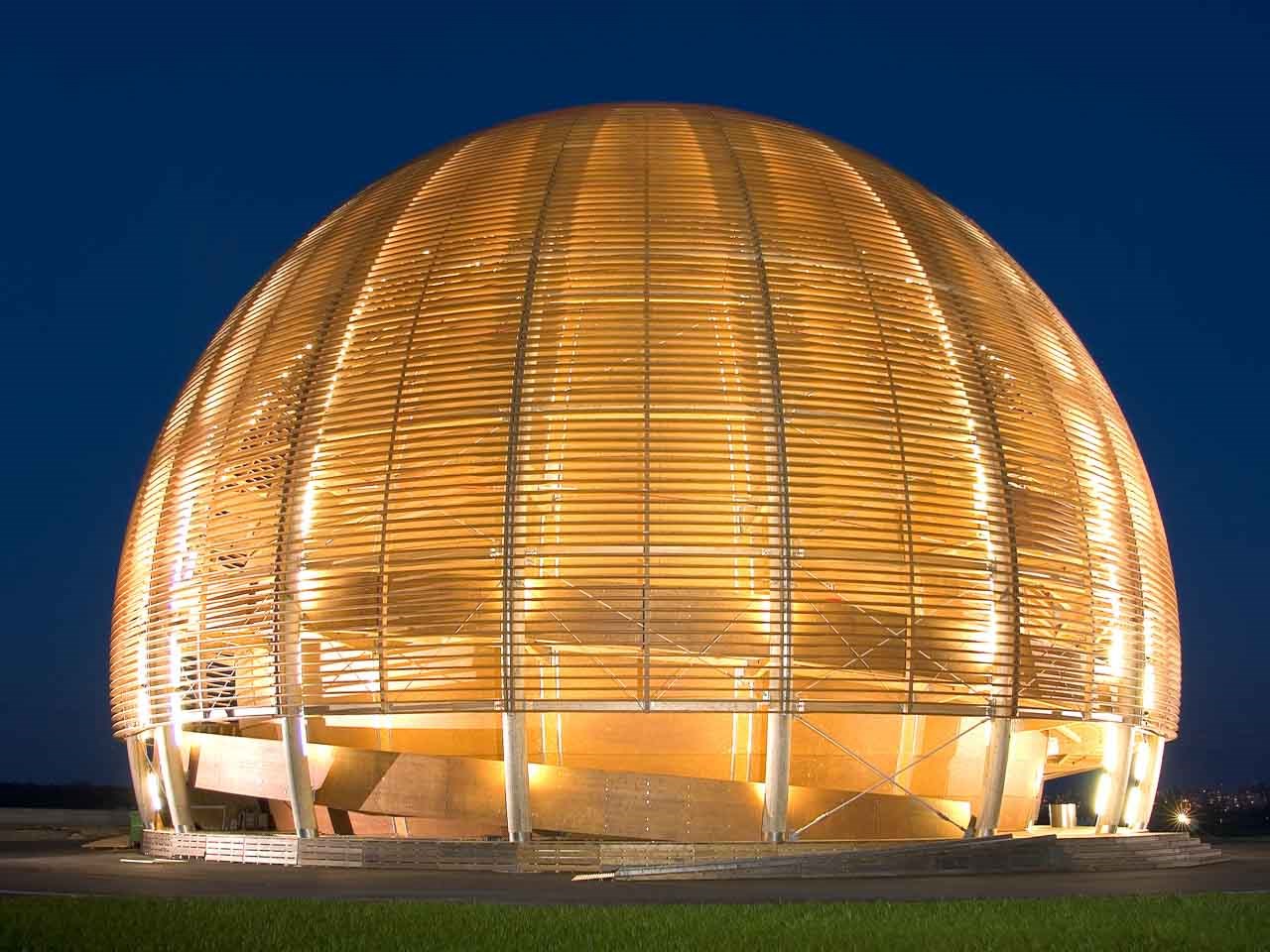

Cern: the original home of the world wide web
Tim Berners-Lee, a British scientist at CERN, invented the World Wide Web (WWW) in 1989. The web was originally conceived and developed to meet the demand for automatic information-sharing between scientists at universities and institutes around the world.
The first website at CERN - and in the world - was dedicated to the World Wide Web project itself and was hosted on Berners-Lee's NeXT computer. The website described the basic features of the Web; how to access other people's documents and how to set up your own server. The NeXT machine - the original web server - is still at CERN. As part of the project to restore the first website, in 2013 CERN reinstated the world's first website to its original address.
On 30 April 1993 CERN put the World Wide Web software in the public domain. CERN made the next release available with an open licence, as a more secure way to maximise its dissemination. Through these actions, creating the software required to run a freely available web server, along with a basic browser and a library of code, the web was allowed to flourish.
St Peter's Cathedral, the symbol of Switzerland's biggest old town
Over 850 years old, Saint Pierre (St. Peter's) Cathedral is Geneva's main church, famous for Jean Calvin preaching here. St. Peter's Cathedral is located in the centre of Geneva's Old Town, partially up the hill overlooking the city. As it underwent rebuilt and transformed over centuries, it combines various architectural styles from Gothic to Ancient. Since the 16th century, the Cathedral is a place of Protestant belonging to the Reformed Church.
The north and south towers are available to visitors, offering exceptional views over Geneva. The cathedral also hosts numerous concerts, there is an archaeological site and the Maccabees Chapel is located here and open to the public.
St.Peter's Cathedral is famous as a place where Jean Calvin stayed and worked. You can see the triangular stool, where he reportedly used to sit, just next to the pulpit. Climb up the two tall towers with the long 157 step spiral staircase in the north tower to get an ultimate 360° panoramic view of all of Geneva and Lake Geneva with it's monumental Jet d'Eau.
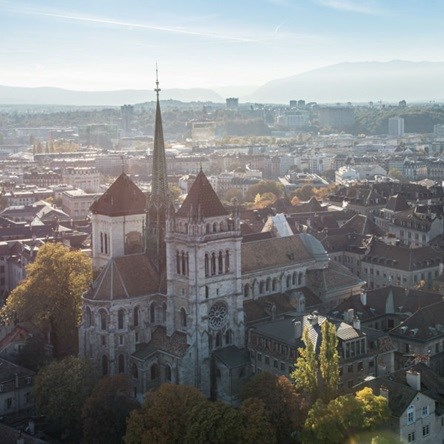

Want to know more? This is just the beginning of your next story about Geneva!
Feel free to contact us






